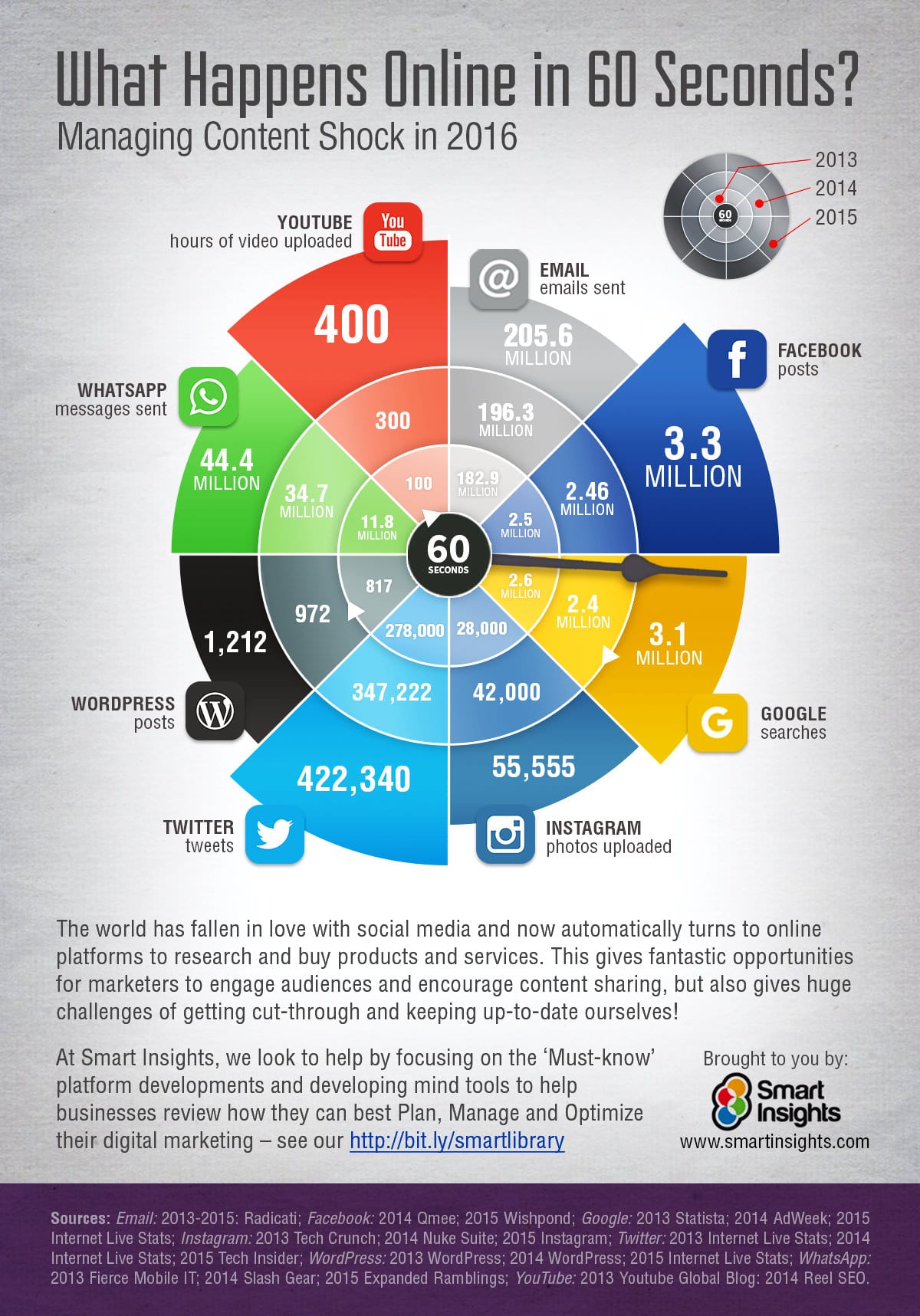Use these highly actionable tips to give your customer acquisition a huge boost this year
Today, consumers expect brands to have personalities — just like people. They demand that companies break the fourth wall and find ways to authentically connect, whether through personalization or engaging with them in real time at the right moment across channels.
The desire for authentic, personal brand interaction isn’t going anywhere. As you enter the new year, it’s wise to keep in mind the effects this consumer mindset has on your customer acquisition strategy. Here are the five digital marketing trends I see as the most imperative for customer acquisition and growth in 2016.
1. Online video consumption is king.
The 18-to-24 age group is becoming harder and harder to reach through traditional channels such as television. Between the second quarters of 2011 and 2015, television viewing by this age group dropped by nearly eight hours per week. With young people’s attention straying to other activities, including streaming, the trend of increased online video consumption will only grow stronger in 2016.

According to Nielsen, 64 percent of marketers expect video to dominate their near-term strategies, and video traffic will make up 80 percent of all consumer Internet traffic in 2019.
Whether your business has the resources to film a custom video or you prefer to use a third party, find a way to harness the power of video. Many channels are available to focus on, such as Facebook, Instagram, YouTube, and Snapchat. The key in 2016 will be to test several channels and formats to determine which provides the greatest return on ad spend.
2. Attribution modeling is playing a larger role in mass marketing.
Attribution modeling has been a hot topic for the past couple of years, but it will really step into the spotlight in 2016. The approach began as a way for advanced marketers to keep track of touchpoints during the conversion process, but with a growing arsenal of channels available to advertisers, it becomes more important to know which provide the desired results.
When it comes to attribution, every team thinks its channel is best, and internal politics frequently sets the model. Many companies leverage an internal attribution model and third parties to ensure they make objective decisions. An internal attribution model assigns proper credit and resources to the marketing channels on the basis of performance. Establishing a multitouch approach to attribution ensures that no channel is taking credit for too much of a sale and that proper weight is assigned to each touchpoint on the basis of how it impacted a final sale.
Marketers can use several tools to measure attribution, depending on size and budgets. Adometry can help a larger company set up and manage its attribution model, whereas Convertro is suited small to medium-sized businesses. Google Analytics is a great place to start with a basic attribution modeling setup. By understanding which roles channels play in the conversion funnel, you’ll be able to assign value to each segment of your sales cycle, focus funds on the most successful areas, and ultimately optimize marketing dollars
3. Mobile isn’t an option; it’s a necessity.
With mobile traffic now making up almost 50 percent of all U.S. retail traffic, the domination of mobile is no longer in doubt; eMarketer even forecasts that U.S. mobile programmatic ad spending will reach $9.33 billion this year and will account for 60.5 percent of total display ad spending.

As mobile continues its inevitable march toward eclipsing desktop for consumption, your brand must adapt its efforts to this platform from both the marketing and technical standpoints. Ensure that your website is optimized for mobile and that your campaign strategy is made with the specific competitive advantages of the platform in mind. For example, smartphones have smaller screens and formats, so content is more effective when it's direct and fast-loading and the user experience allows easy checkout and purchases. Tablets screen sizes are larger and often used in homes, which allows for more complex creative execution.
Google updated its mobile algorithm earlier this year, and our prediction is that
mobile optimization will continue to be a focus in 2016 and that Google will ramp up its penalization of non-mobile-friendly sites in the coming year. After all, mobile organic search visits were at 45 percent in third-quarter 2015, up 7 percent from the previous year, a trend we expect to continue.
Along with mobile optimization, marketers also need to keep their mindsets mobile-centric to ensure positive user experiences, which directly correlates with buying behavior. Experts estimate that by 2020, user experience will be the main differentiator among brands, surpassing pricing and product nuances.
4. Personalization pays dividends.
As marketing tools become more sophisticated in their abilities to leverage data, countless opportunities arise to fine-tune and tailor marketing efforts. We’re moving away from a one-size-fits-all approach to a more granular one that allows for greater customization.

Personalized emails, for example, see six times the transaction and revenue rates of their counterparts (when considering strictly promotional messages). And targeted calls to action have a 42 percent view-to-submission edge over standard ones. With metrics like that, it’s no wonder that 62 percent of marketers employ some variety of personalization in their tactics.
Keep in mind that real-time data is a great tool for curating thoughtful recommendations for customers. The secret is to turn that information from data into a powerful, compelling story. Even if you’re using marketing automation tools, the customer connection has to seem personal.
5. The Internet never sleeps — and neither should your real-time engagement.
Particularly with the emergence of platforms such as Snapchat, consumers expect to be able to interact 24/7/365 with brands. When baked-goods chain Cinnabon joined Snapchat, it gained 2,000 followers in just two days.

Real-time engagement is the biggest social media challenge for 51 percent of brands. But when done correctly, it lets brands to be relevant and capitalize on big cultural moments and trends. Engage with customers on social media, pay attention to trends, and use triggered emails and notifications to connect at opportune moments.
For example, consider the online buzz Pope Francis generated with his September 2015 visit to the U.S. Of the 1.8 million tweets generated in 24 hours, Fiat — the popemobile of choice — benefited most: Twenty-two percent of all Fiat’s digital-content engagement related to the pope that week.
Consumers’ desires for video, personalization, mobile, and real-time engagement are nothing new, nor is the importance of attribution modeling. However, while these approaches may be standard, the directions they’re taking are anything but.
By understanding these trends in the digital space, you’ll be better equipped in 2016 to break that fourth wall with consumers — without breaking the bank.
 Robert Glazer,
Robert Glazer, founder and managing director of founder and managing director of
Acceleration Partners, is a customer acquisition specialist with an exceptional track record in growing revenue and profits for fast-growing consumer products and services companies. His clients include adidas, eBay, Gymboree, The Honest Company, ModCloth, Reebok, Shutterfly, Target, Tiny Prints, and Warby Parker. For more best practices on working with agencies, visit
the Acceleration Partners blog












